Do’s & Don’t of Driving in Ireland (#12 – A Rule Most Are Unaware Of!)
Ireland Travel Planning contains affiliate links and is a member of the Amazon Services LLC Associates Program. If you make a purchase using one of these links, I may receive compensation at no extra cost to you. See my Disclosure Policy for more information. Ireland Travel Planning also uses both personal and paid stock photos to illustate posts
Driving in Ireland seems to be the thing that scares or overwhelms most first time visitors. And honestly, I get it, the Irish roads can be quite daunting to get your head around.
We have quite fast speed limits, winding layouts and routes that tend to be a little bit on the narrow side.
However, as your trusted local guide I want put your mind at ease, with this do’s and don’ts guide to driving in Ireland.
The best way to overcome the ‘nervous’ elements to Irish roads is to be prepared!
And besides, having access to a car in Ireland can really take your trip to the next level. Just picture the incredible hidden gems and unspoiled landscapes that are in your future.
Before you visit Ireland, here are some quick recommendations…
📞 WANT TO AVOID HIGH ROAMING CHARGES? Airalo eSIMs work seamlessly across Ireland with their quick, easy and affordable plans. (ROI Deals & ROI & NI Plans)
❌ AVOID OVERPAYING FOR CAR RENTALS: Comparison websites like Discover Cars allow you to secure the best rental prices from some of the top providers.
✈️ SAVE MONEY ON YOUR FLIGHTS: Skyscanner's price tracker will ensure you get the best flight deal for your trip to Ireland!
🚨 DON'T SKIP INSURANCE: I can't stress this enough, but travel insurance is an absolute must! Thankfully, SafetyWing have some pretty affordable plans.
🤫 DISCOVER UNIQUE THINGS TO DO: For example, design your very own Claddagh Ring in Dublin or explore the city with a local on a street food walking tour.
I typically find the best experiences by using the likes of GetYourGuide or Viator.
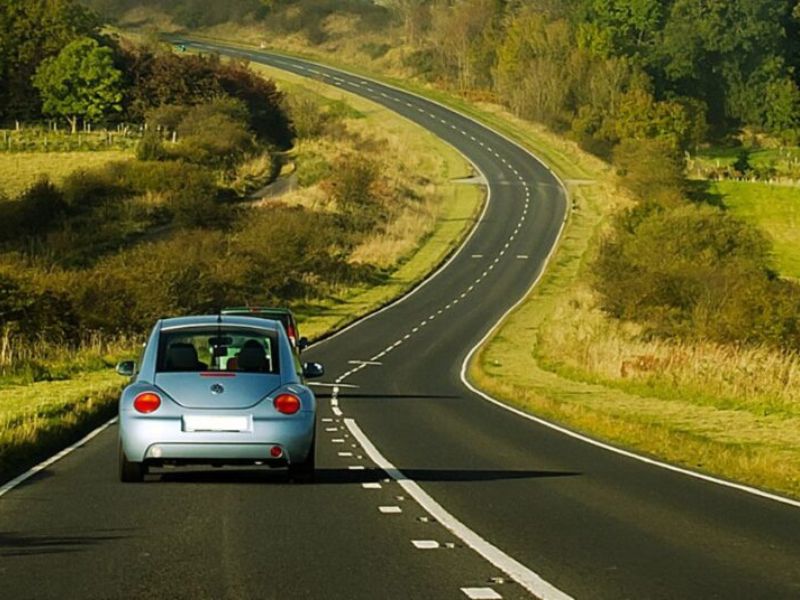
1. Do: Drive on the Left
Driving on the left hand side of the road can feel confusing for over 70% of the worlds population but promise with little bit of practice it will feel natural!
And after an hour or so of driving you’ll be surprised at how easily your mind adjusts.
In Ireland, we typically have many reminders on our roads that reinforces the idea of driving on the left, for example there will will be signs when entering motorways, using traffic lights as a pedestrian and generally speaking there will be stickers on the windscreen of rental cars.
The main thing to remember is to stay calm and focused, especially when pulling out onto main roads.
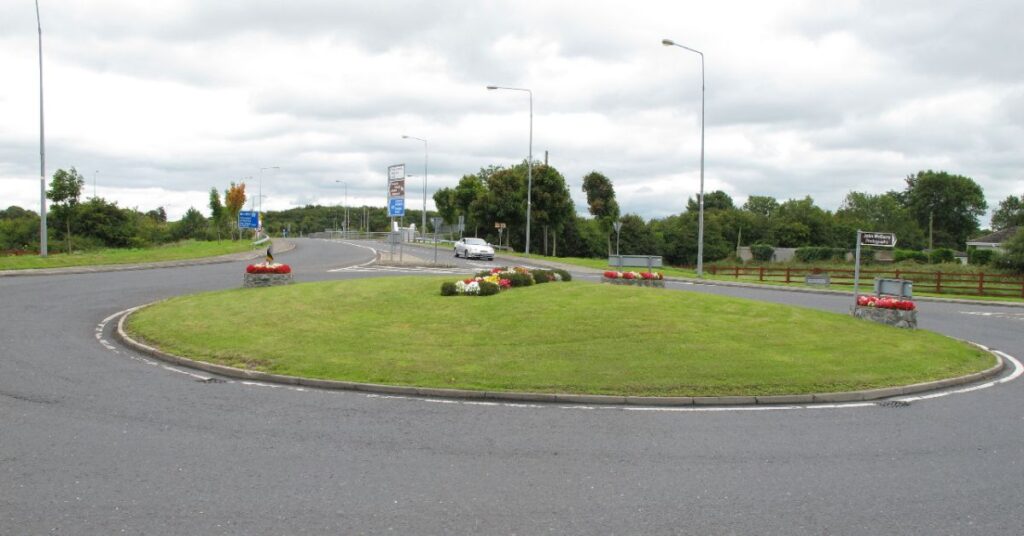
2. Don’t: Forget About Roundabouts
Ok, I have a little bit of sad news, but in Ireland roundabouts are EVERYWHERE! So, this is something to be mindful of, especially if driving on the left is something that is foreign to you.
Knowing how to navigate them is essential for a smooth driving experience and I am going to give you a quick run down here.
When approaching a roundabout, always remember to yield to traffic already on the roundabout, which will be coming from your right. Basically, the person on the right always has the the ‘right of way’.
A common mistake to avoid is failing to use turn signals correctly. When taking the first exit, signal left as you approach.
If you're going straight or taking any other exit, signal left as you pass the exit before the one you plan to take.
This helps keep the flow of traffic smooth and ensures other drivers know your intentions.
When dealing with roundabouts that have two lanes, be mindful of which lane you’re in.
Generally, the left lane is for taking the first or second exits, while the right lane is for the third exit or going full circle.
If you're unsure, check the road markings, as they'll often indicate the correct lane for your intended exit.
In Ireland, we called the signal light an ‘indicator’. I’m not fully sure what it is called in other parts of the world, I have heard it be referred to as a ‘blinker’ while in the US.
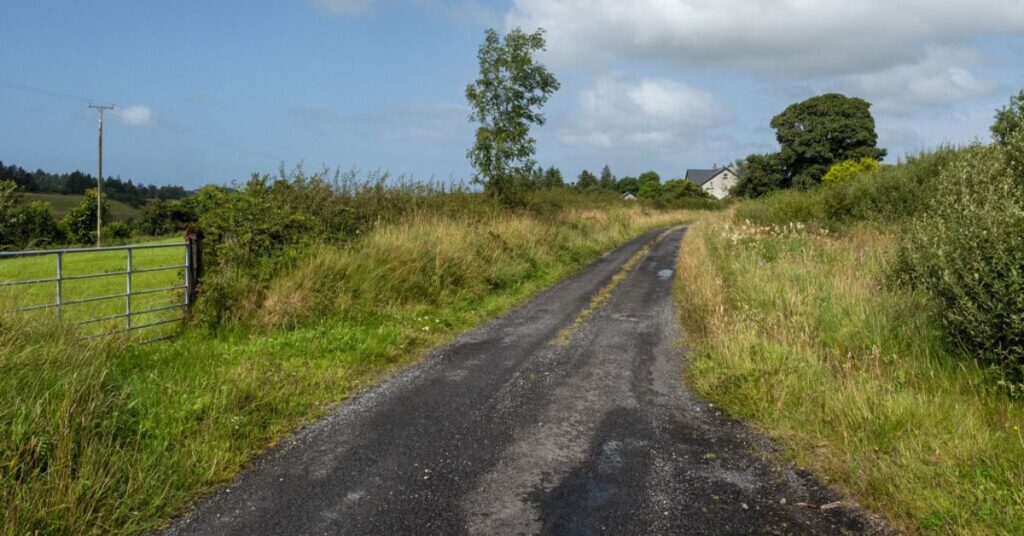
3. Do: Watch Out for Narrow, Rural Roads
The first thing I want to mention about Ireland’s iconic narrow country roads is…try avoid them if you can.
The thing is, google maps likes send you down them, despite there actually being a more direct and less rural route.
I think it’s because the speed limit on these roads tend to be 80 km/h (50 mph), so from GPS standpoint, yes, it is technically quicker.
But…the reality is…no one in their right mind is driving on road with grass in the middle that looks like it should be a one way system at 80 km/h.
Unless, you happen to meet ‘Bob’ from around the corner who has been driving the same route since he was 16…
So, the moral of this point is scan the GPS options to see if there are anymore direct routes to choose from.
If you do find yourself on one of these roads keep your speed low, even if the posted speed limit allows for faster travel.
And if you find yourself in front a local, pull into passing areas to allow them to pass you by.
It’s better to drive safe than under pressure!
Need with your Ireland trip? Let me be your guide…
🙋♀️ Travel Consultation
Book a 40 minute Ireland Travel Planning call with Laura your local guide to discuss some insider tips for your Ireland vacation!
🇮🇪 Free Resources
Explore my free resources packed with insider tips and expert knowledge to help you plan your trip to Ireland!
😘 Say Thank You
Finding my content helpful? A small tip would mean the world to me. It helps me to continue making these free guides 💛
Or, Join my FREE Ireland Travel Planning Facebook Group to ask questions about your upcoming trip! I pop in once a week to answer as manny as possible 🇮🇪
Need HELP with your Ireland trip? Let me be your guide…
🙋♀️ Travel Consultation: Book a 40 minute Ireland Travel Planning call with Laura your local guide to discuss some insider tips for your Ireland vacation!
🇮🇪 Free Resources: Explore my free resources packed with insider tips and expert knowledge to help you plan your trip to Ireland!
😘 Say Thank You: Finding my content helpful? A small tip would mean the world to me. It helps me to continue making these free guides 💛
ℹ️ Join my FREE Ireland Travel Planning Facebook Group to ask questions about your upcoming trip! I pop in once a week to answer as many as possible 🇮🇪
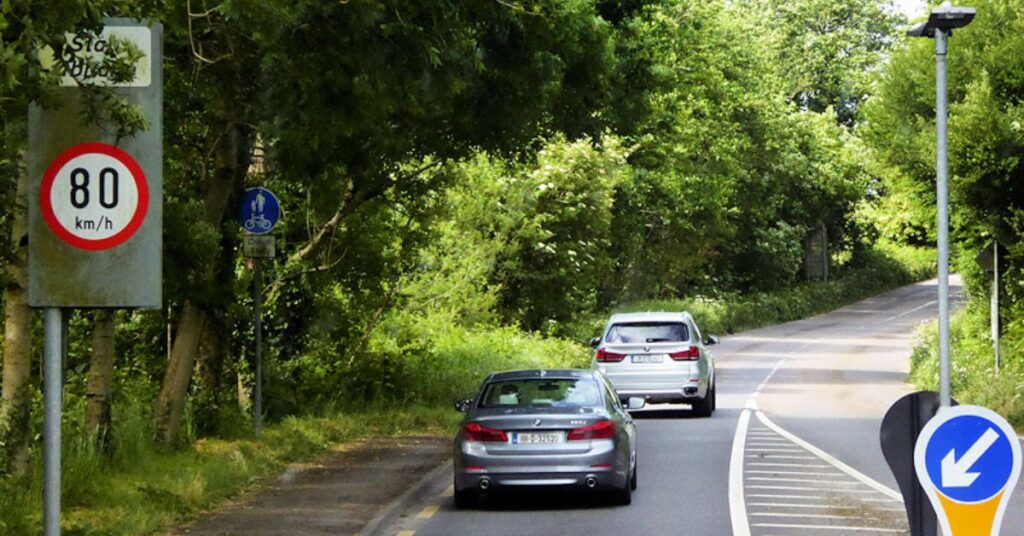
4. Don’t: Ignore Speed Limits
Speed limits in Ireland can feel like a bit of a mixed bag, especially if you're bouncing between towns, countryside, and motorways (highways).
One minute you’re cruising along at 100 km/h on a national road, and the next, you’re slowing down to 50 km/h as you roll into a tiny village with one pub and a post office.
In urban areas and town centers, speed limits are typically 50 km/h (about 30 mph). Once you’re out in the rural stretches, the limits jump to 80 km/h (50 mph) or 100 km/h (62 mph). And highways or motorways let you push up to 120 km/h (75 mph).
But the thing is, speed signs aren’t always obvious, especially in more rural or scenic areas where the last thing you’re thinking about is a speed limit sign tucked behind a hedge. Luckily, google maps is getting better at displaying the limit as you drive, but not always, so this something to be mindful of.
When it’s comes to enforcement, speed camera’s a quite common in Ireland and they come in a few different types of forms.
First, is the Gardaí, Ireland’s police force. They’ll typically get you with speed gun, they’ll sit themselves somewhere not so obvious monitoring passing by vehicles speed. As far as I am aware, they have to actually pull you over in order for you to get a ticket but I’m not 100% certain on this.
Then we have mobile speed vans that are usually parked up on the side of a road, these are really easy to spot with reflective yellow pattern on the outside and a big camera graphic but sometimes (particularly on fast roads) you’ve have passed them by before having time to react. This of course is only an issue if you choose to speed, which for obvious reasons I advise against.
In recent years, they have introduced average speed cameras, again there is plenty of warning before you approach them. They are located on a big yellow post and track your average speed between one junction to another.
If you get caught speeding you will be issued a fine and 3 penalty points. The points for international visitors will only affect you when driving in Ireland.
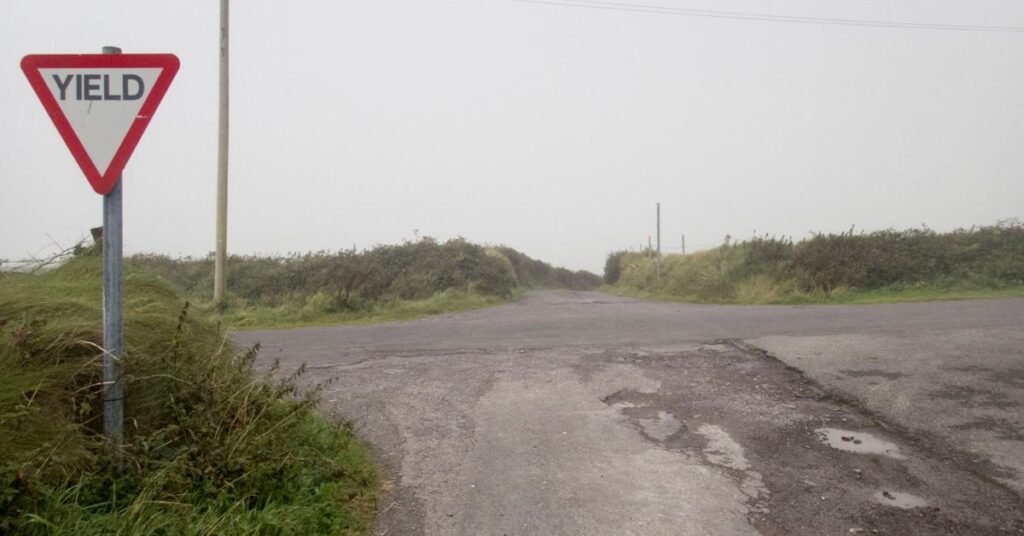
5. Do: Familiarise Yourself with Road Signs
Ireland has its fair share of quirky and unique road signs that might leave you scratching your head if you're not prepared.
While some signs will look familiar, like speed limits and stop signs, there are a few that are distinctly Irish—literally.
One of the first things you’ll notice is that many signs are in both English and Irish (Gaeilge). So, if you see something that says “Go Mall” (probably the most commonly placed sign in the Irish Language) that’s just means ‘go slow’.
In rural areas, keep an eye out for signs warning of things like sheep crossings or winding roads.
You'll also find directional signs that give distances in kilometers, so if you're used to miles, it's good to have a rough conversion in your head.
Another important one is the “Yield” sign, which is equivalent to a “Give Way” sign in other countries, and the “No Overtaking” sign—a red circle with a line going through it and two black cars. This is crucial on narrow roads where overtaking can be dangerous.
And let's not forget the “Slippery Road” sign, which looks like a car skidding. If you’re driving during one of Ireland's famous rain showers, you'll understand why this sign is so common—wet, winding roads can become hazardous quickly.
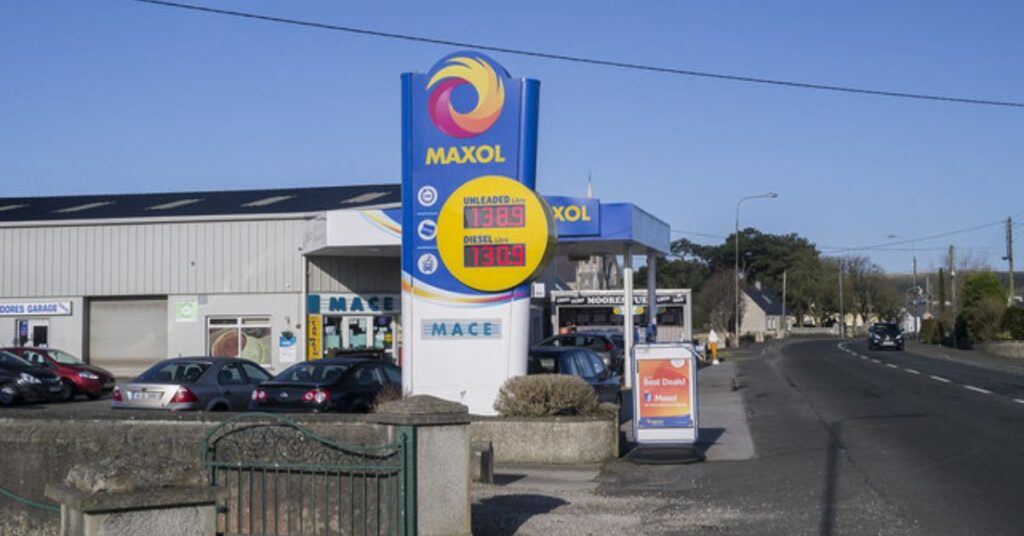
6. Don’t: Assume Petrol Stations are Open 24/7
There has been a number of times where I have left it a little too late to fill up my tank only to find out that all the near by stations closed at 9pm. Please don’t make the same mistakes as me! 🤣
Particularly, in more rural area’s it is common for petrol stations or service stations to close sometime in the late evening.
In cities or on Motorways you will find 24 hour stations but other than that you will have to really search for one.
As for fuel types, Irish stations typically offer both petrol (gasoline) and diesel. Make sure you know which one your rental car needs—mixing them up can lead to a whole lot of hassle (and a hefty bill).
Also, it’s important to note that all service stations in Ireland are self service, typically, you pump the petrol or diesel yourself and then tell the shop assistant which pump your car is parked at so that they can issue the payment.
Recently, some stations have introduced card payments at the actual pump itself, in these cases there are usually instructions that you can follow.
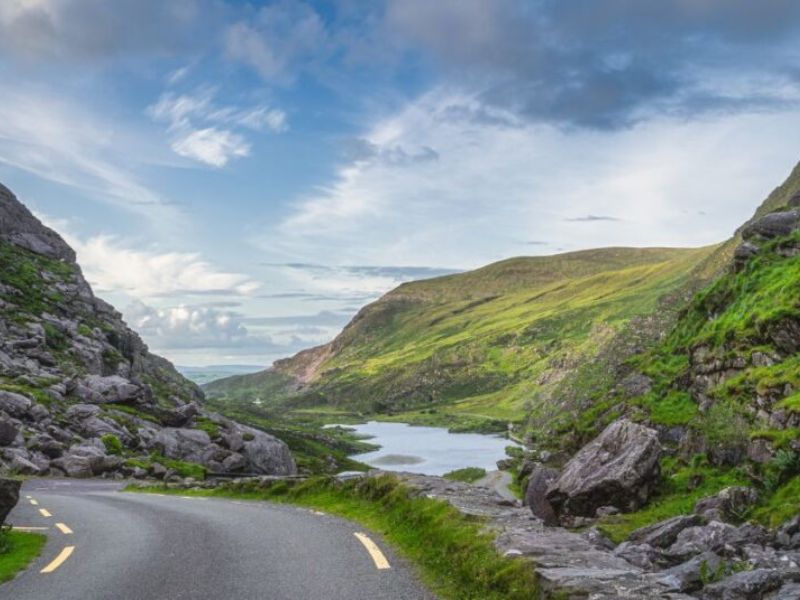
7. Do: Be Patient and Polite on the Road
If there’s one thing that will make your driving experience in Ireland a whole lot smoother, it’s mastering the art of patience and politeness. The pace of life here can be a little slower, especially on the roads—so it’s best to embrace it.
Whether you're stuck behind a tractor on a narrow rural road or navigating through town traffic, a little courtesy goes a long way.
In rural areas, you're bound to come across farm vehicles like tractors or even a herd of sheep (yes, it happens!). The rule of thumb? Slow down, give them plenty of space, and resist the urge to beep your horn or rush.
Tractors might pull over to let you pass, but only if there's a safe spot—in Ireland a fully acceptable excuse for being late is due to being stuck behind a tractor 😉
We also have a lot of driving constoms, for example flashing lights this often means someone is letting you know you’re clear to go, or they’re warning you about something ahead (like a speed trap or obstacle) or they want to say thank for letting them pass.
If a drover behind you allows you into a lane, or make a turn on a busy junction you can thank them by waving up to the review mirror or pressing the hazard lights are a second or two,
Speaking of local customs, don’t be surprised if you get a wave from someone you never met before while passing each other by in a car.
Generally speaking, lifting one or two fingers off the wheel is a way to acknowledge a complete stranger, lifting all 4 fingers off the wheel is a way of acknowledging someone you vaguely know and full wave is a way of saying hi to a neighbour or friend. However, you could get all of the above despite never actually meeting the passer by before.
Sometimes as a way of saying thanks or just a simple hi.
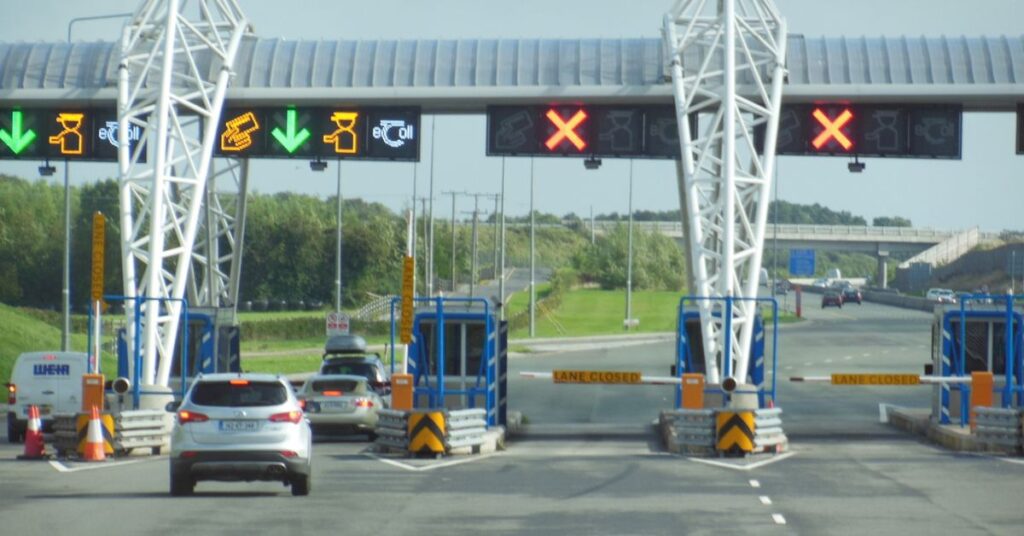
8. Don’t: Panic at Toll Roads
In my Ireland Travel Planning Facebook Group I have a lot people asked about toll roads in Ireland, and if I’m being honest, there are more than I wish there where!
But…there is no reason panic about them because they are generally quite easy to use.
When it comes to paying, you have a couple of options. Many tolls have electronic payment systems, so if you’ve got an electronic tag in your rental car if that’s a service the company offers and then you’re all set as everything is automated!
If you choose to go down the DIY route then cards payments are your best option however some booths do still take cash. This will be well sign posted as you approach the bridge.
The m50 toll in Dublin, is pretty much the only confusing one in my opinion. It’s quite literally a big scanner in the sky and if you don’t pay within 24 hours the fee will increase. You can arrange a deal for this with you rental company or you can pay online once you pass it.
My best advise is to familiarise yourself with it’s location to avoid any accidental charges.

9. Do: Prepare for Changing Weather
Ah, the weather in Ireland—unpredictable is an understatement! One moment you could be basking in sunshine, and the next, a downpour is on its way. This can seriously impact your driving, so it’s essential to be prepared.
When you hit the road, especially in fog or rain, take it slow and increase your distance from the car in front of you.
If you’re driving in heavy rain, be aware of hydroplaning; reduce your speed and avoid sudden movements. And let’s not forget about icy roads during those rare cold snaps—drive extra carefully and keep your headlights on.
A good rule of thumb? Always keep your headlights on in inclement weather. It not only helps you see but also makes you more visible to other drivers.
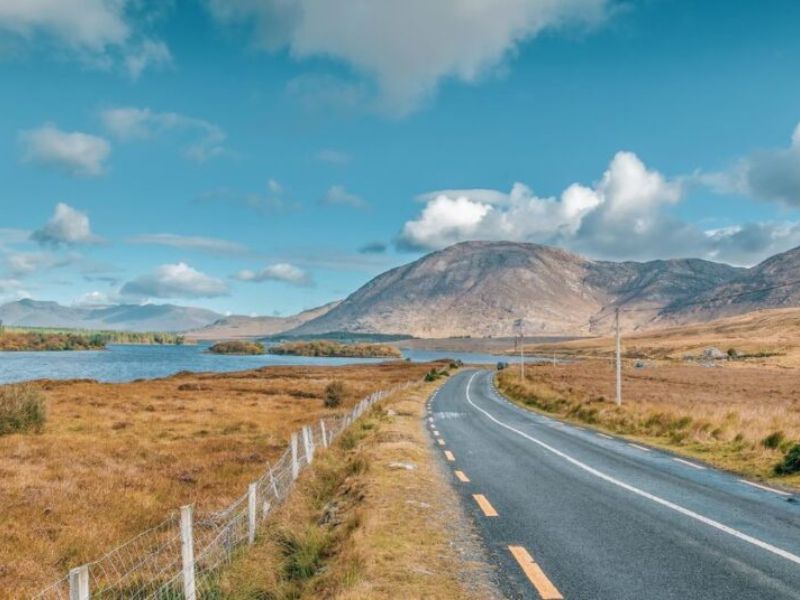
10. Don’t: Rush Your Drive
It can be hard to justify driving slowly when there is so much to see and do when in Ireland. Especially when you only have a few days to explore.
But when on those narrow, winding roads, speeding is a big no-no. Take your time, enjoy the lush countryside that Ireland is famous for and enjoy every moment.
You never know when you might stumble upon a hidden gem or two that wasn’t originally on your itinerary thanks to taking your time as you drive.
So, slow down, soak it all in, and let the stunning landscapes of Ireland work their magic!
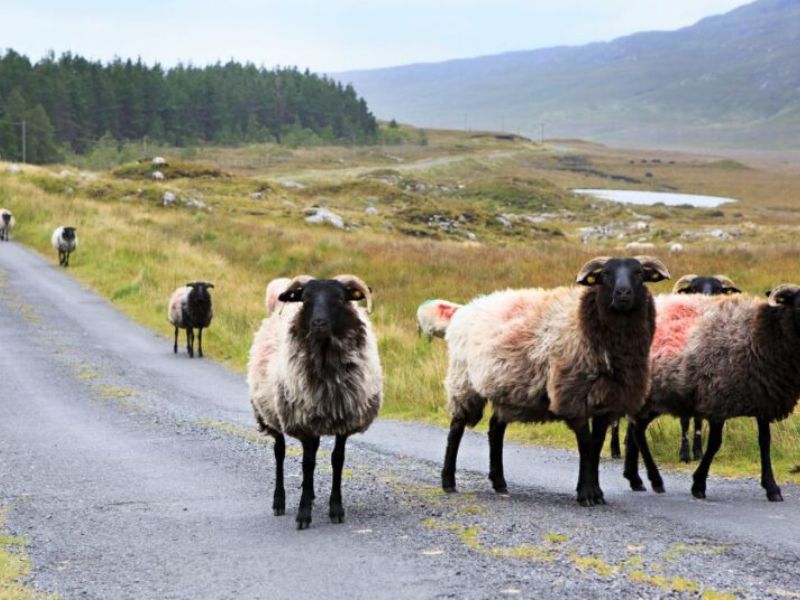
11. Do: Expect Sheep and Livestock on the Road
One Irish stereotype that is 100% likely to be true is there are more sheep than people!
When driving through the rural parts of Ireland, you might find yourself sharing the road with some unexpected traffic—sheep and other livestock!
Yes, you read that right. It’s not unusual to see these fluffy creatures casually munching on grass right next to the road, and sometimes, they just decide to saunter across, staring at the car with little intention to move quickly.
If you encounter livestock, just slow down and come to a complete stop if necessary. And don’t beep your horn this can be really distressing for the animals.
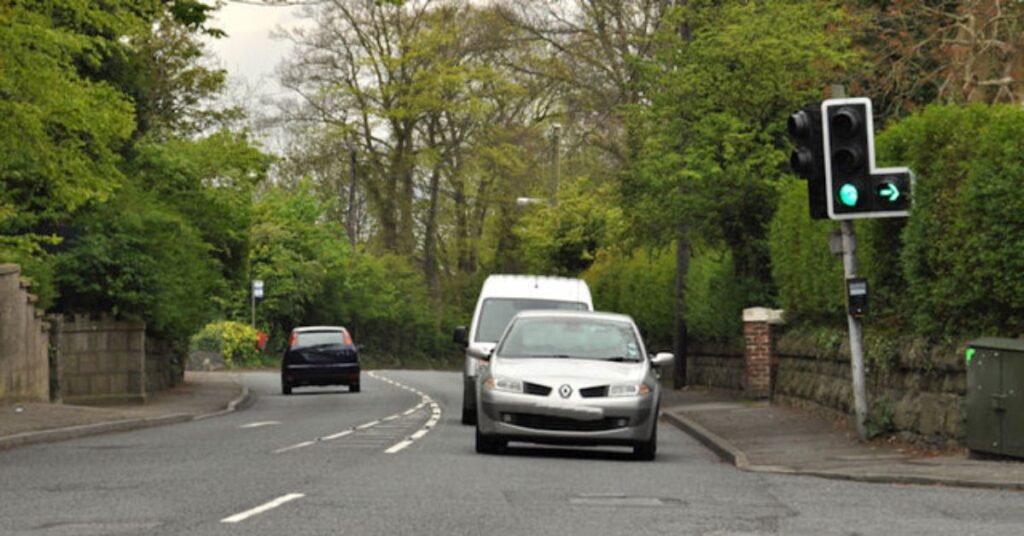
12. Don’t: Turn Left or Right on Red
Here’s a driving tip that’s crucial to remember: in Ireland, you can’t turn left or right at a red light.
Unlike some other countries where that’s allowed, you need to come to a full stop and wait for the green light—no exceptions.
If you’re thinking about making a left turn on red, forget it!
Unless there’s a specific sign allowing it, at times there will be a specific turning light for the more difficult junctions.
If a turning light is not present, you wait for the main light to turn green and then drive into the turning box (at times can be faded) to allow cars going straight to pass.
You then make a turn once all the oncoming traffic has passed. If you notice the light start to turn red, once you have passed into the box you are ok to proceed with the turn.
And for right turns? Same rules apply—wait for that green light, especially at intersections where you’ll be crossing oncoming traffic.
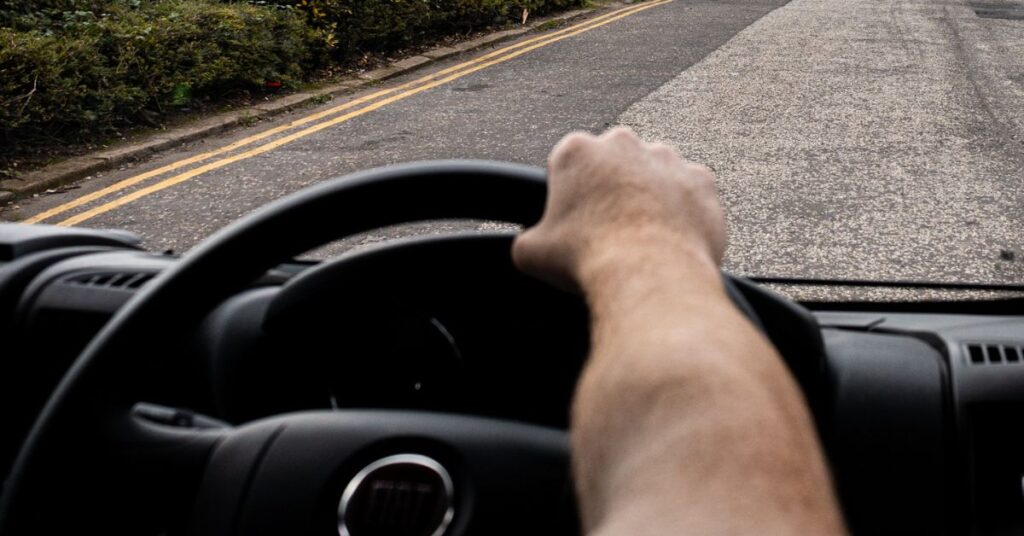
13. Do: Use Your Horn Sparingly
In Ireland, your horn isn’t your best friend for expressing frustration—it’s more of a safety tool (although some drivers with road rage in Dublin city may disagree with me here).
When you’re driving, use your horn sparingly and only when necessary. You’ll often hear it on sharp bends or to alert farm vehicles that you’re coming up behind them.
In essence, think of your horn as a polite “excuse me” rather than a “get out of my way!”
Now of course, if something dangerous is about to happen use you horn to alert other drivers. It’s important to keep everyone as safe as possible.
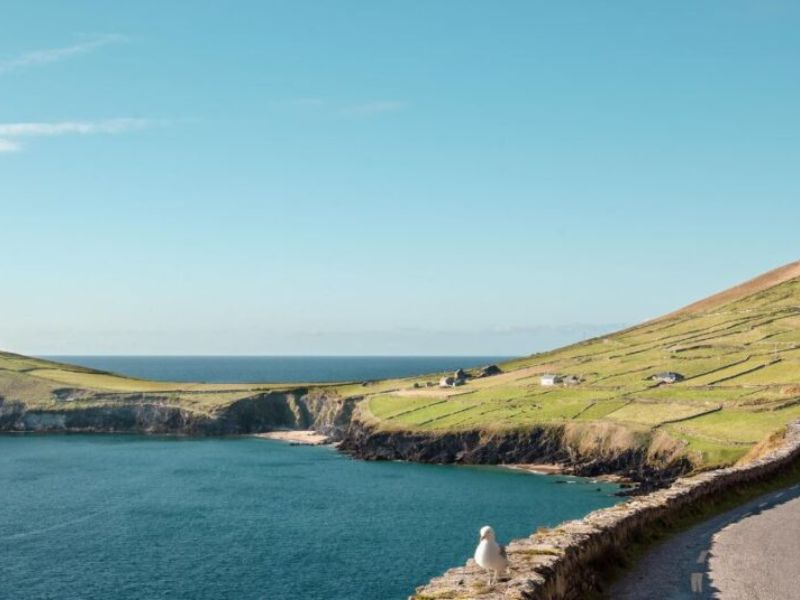
14. Don’t: Presume Ireland’s Small Size Equals Short Driving Times
Don’t let Ireland’s petite size fool you—just because the map looks compact doesn’t mean you’ll zoom through the country in record time.
Those beautiful scenic routes you’ll want to take can stretch out your journey, especially when you’re navigating rural roads that wind and twist.
Most of Ireland’s beautiful landscapes are located on the Wild Atlantic Way, and believe me, some of the drives take much long than you expect. Besides, you’ll be stopping every two minutes to take a picture of the views.
Have a Ireland Travel Question?
Then join my FREE Facebook Community, I pop in once a week to answer as many queries as possible. Please do not email or DM. It is easier for me to manage everything in the one place 😊
👋 JOIN MY FREE IRELAND FACEBOOK COMMUNITY

🇮🇪🇮🇪🇮🇪
FREE IRELAND FACEBOOK COMMUNITY
✔️ LOCAL ADVICE
✔️ FREE ACCESS TO GOOGLE MAPS PINS
✔️ GROUP DISCUSSION


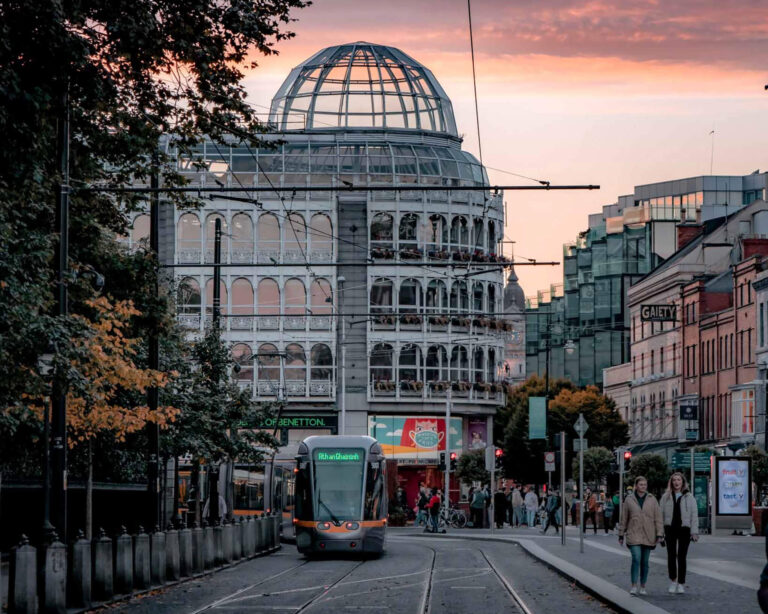
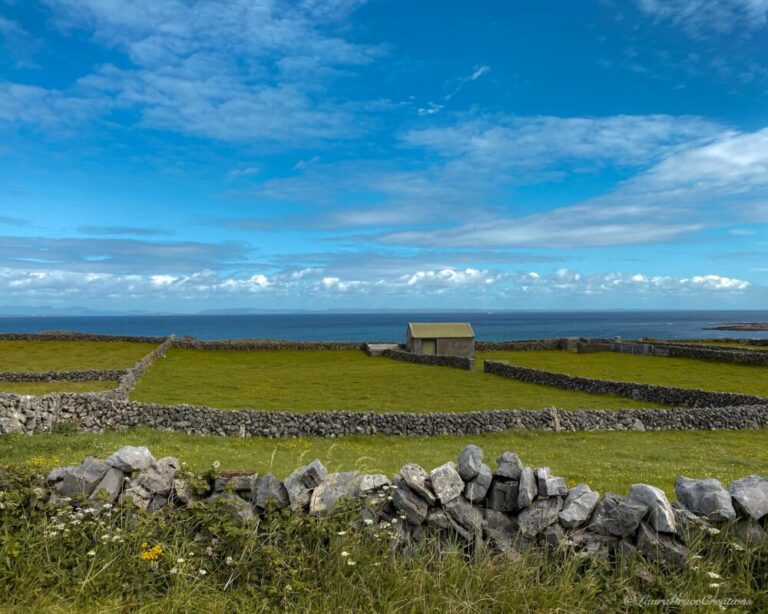
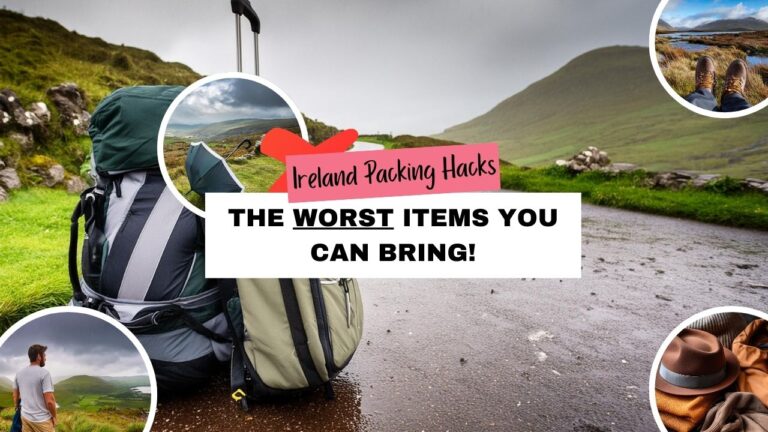
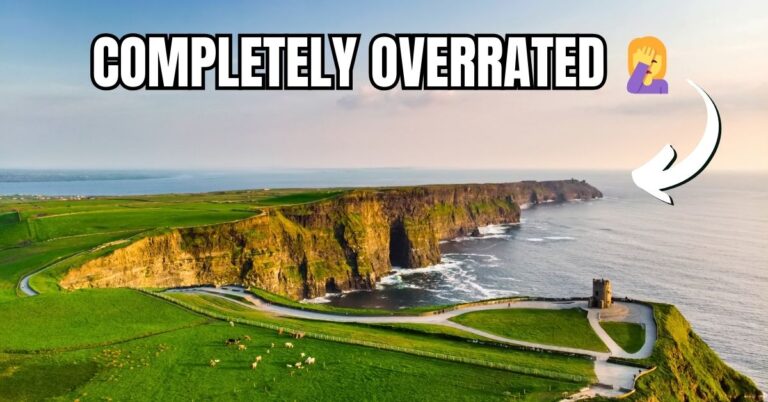
Facebook Comments